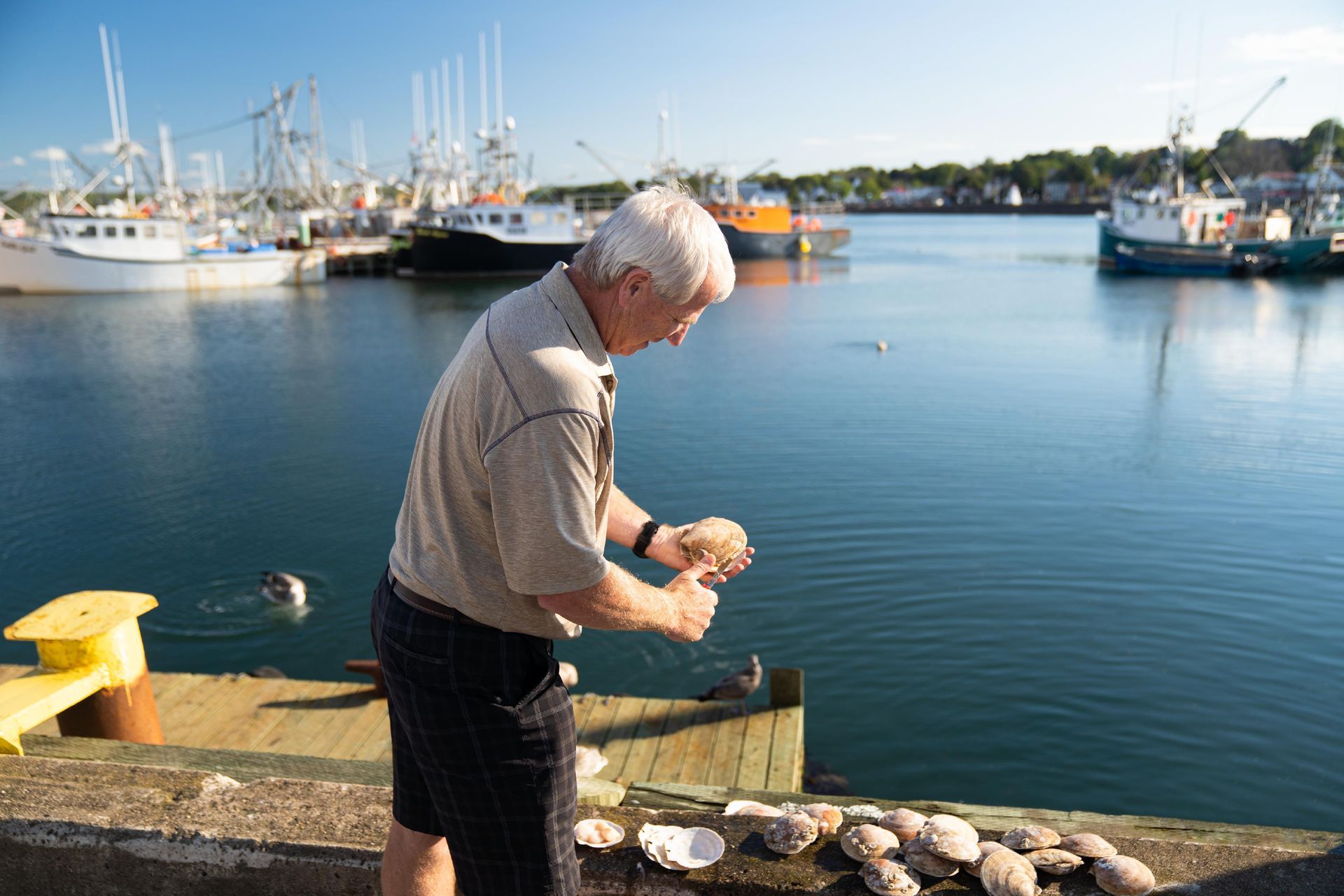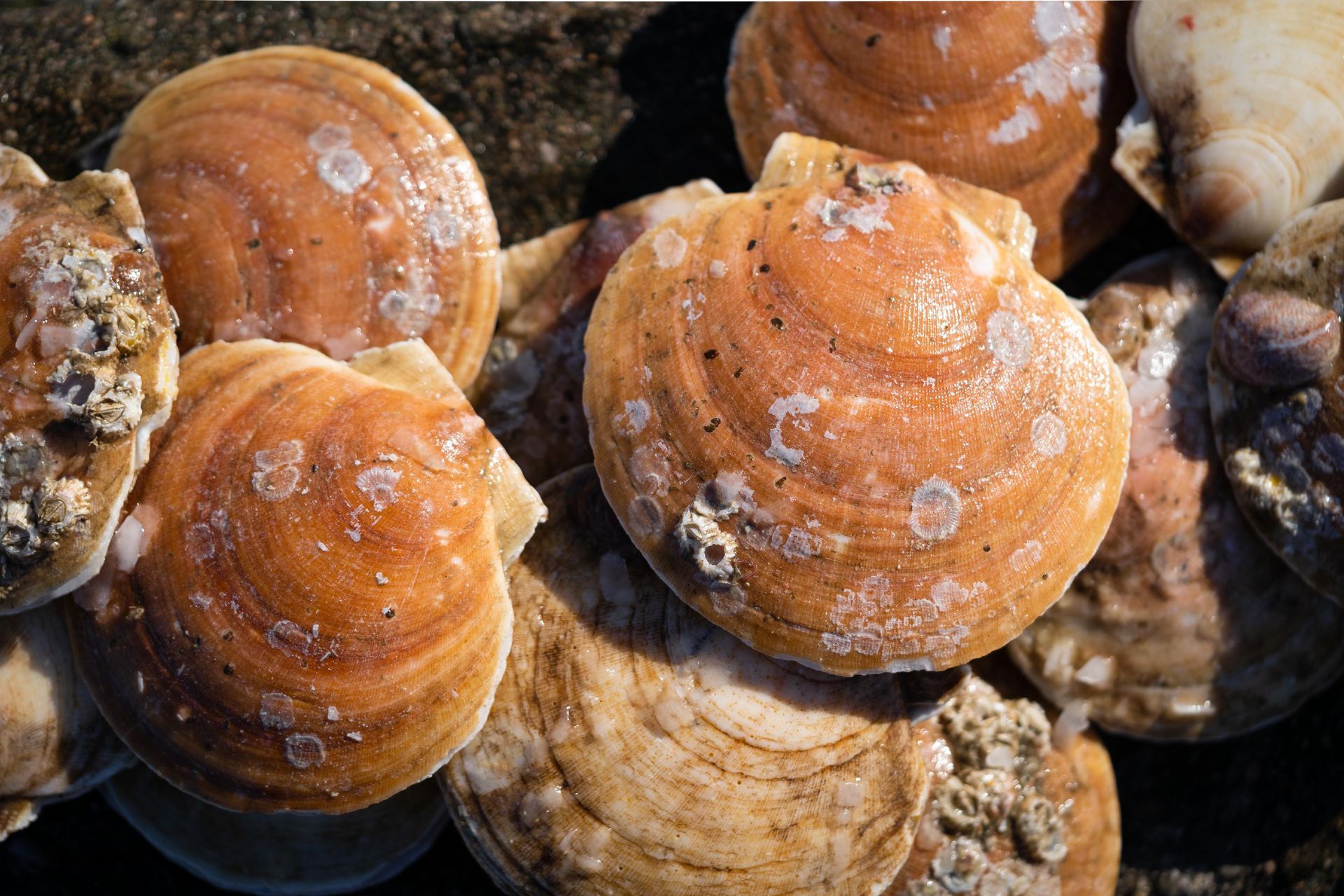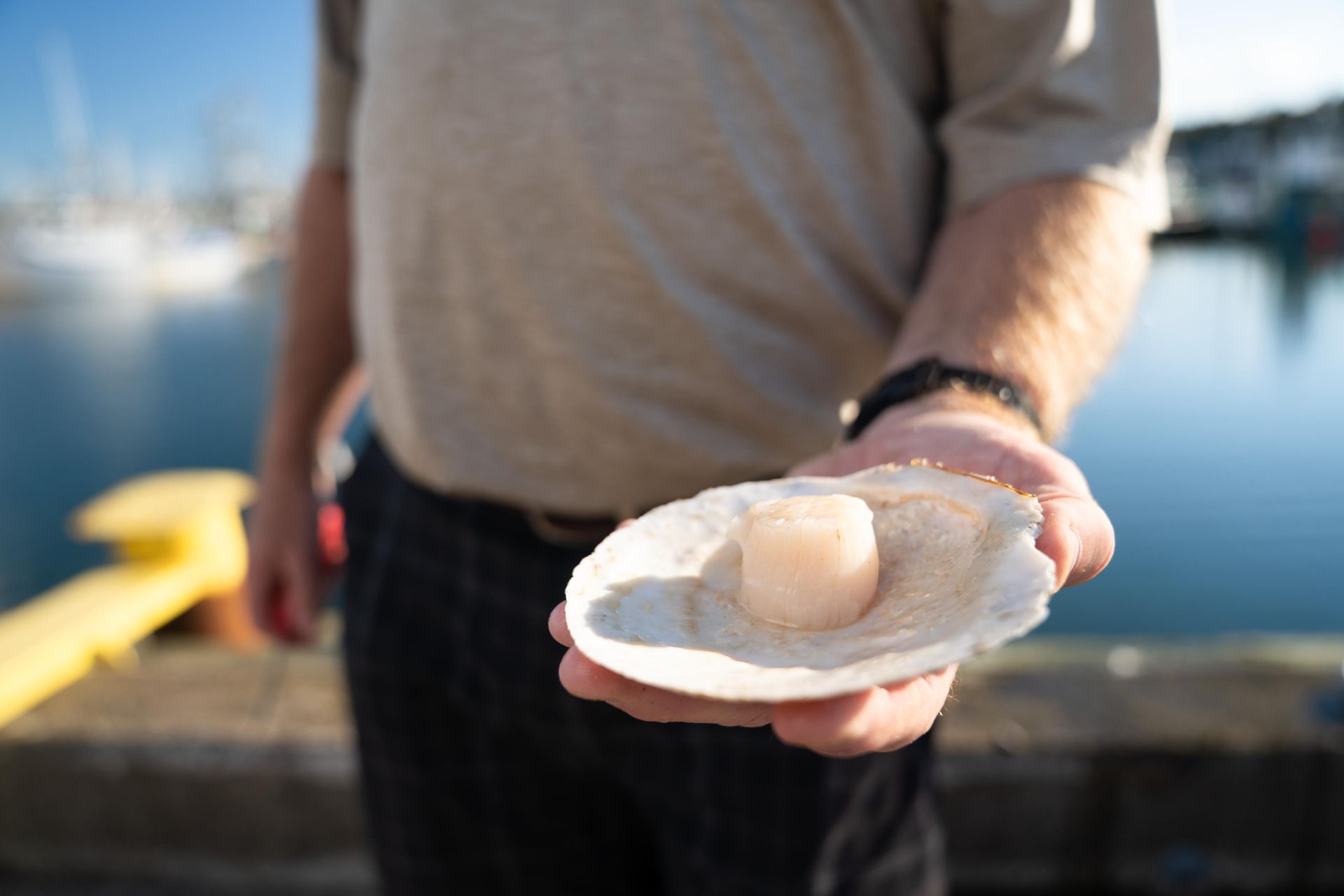I N S H O R E
SCALLOP
INDUSTRY
Explore why Digby and the Bay of Fundy are renowned as the Scallop Capital of the World. Since the 1920s, Digby's thriving scallop industry, supported by sustainable practices, contributed $30.2 million in landings in 2022. Discover the traditional harvesting methods and the significant impact on Digby's economy and heritage.
D I G BY H E R I T A G E
SCALLOP CAPITAL
OF THE
WORLD
Scallop Capital of the World
Digby and the Bay of Fundy have earned the title of Scallop Capital of the World since pioneering the industry in the early 1920s. In 1995, the scallop industry adopted a quota management system, balancing science and industry recommendations for annual fishing.
The Digby Drag, used to collect scallops, involves a bar with nine drags attached by chains, towed across the ocean floor for 20 to 30 minutes. Once hoisted aboard, the scallops are sorted, shucked by hand, and stored on ice until the vessel returns to port. Depending on the weather, vessels may spend up to seven days at sea.
Scallops, a family of bivalves...
Scallops are found in all the world's oceans but never in fresh water. Unique among bivalves, many scallop species are "free-living," capable of rapid swimming and migration across the ocean floor. They mostly reside on sandy substrates and can escape predators like starfish by swiftly clapping their shells together for jet propulsion. Scallops possess a well-developed nervous system and a ring of simple eyes around the edge of their mantles.
Scallops, a cornerstone economy...
Scallops are filter feeders, resilient to water temperature fluctuations, and responsive to food availability. Effective fisheries management and a productive ocean have made the inshore scallop fleet a cornerstone of the local economy, with $30.2 million in scallop landings at the Port of Digby in 2022, according to Department of Fisheries records.







